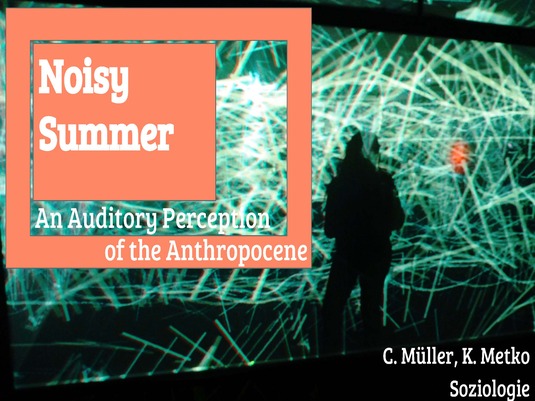Noisy Summer - An Auditory Perception of the Anthropocene
13.11.2017
by Christina Müller & Kerstin Metko
Supervisor: Dr. Ursula Münster

Photo Credit: C. Müller & K. Metko.
Studying at the Rachel Carson Center— named after an extraordinary scientist, whose work was so important in the development of the sustainability movement— was a great inspiration for this project. In her book Silent Spring, she made the negative effects of pesticides on the environment, especially for insects, public. Inspired by Carson’s concept in the book, in which she switched her approach from a predominantly visual one to a (generally neglected) acoustic one, we decided to deal with our topic in an auditory way as well. Another reason for taking this approach is that sound connects us inescapably with the world—we can close our eyes, but hardly our ears.
It was ear-opening when we started to focus on all the noises around us, when we noticed the different qualities of sounds that our daily life provides, and when we became conscious that this sound backdrop is pretty new and unique in history. We learned to keep in mind that the soundscapes around us are highly diverse on the one hand, yet very characteristic of our time on the other. The more you focus on soundscapes, the more you become aware of the stories behind the noises. These stories reflect information about the current state of our environment. By working and dealing with these noises, for example a singing bird trying to compete with a noisy construction site, we are provided information beyond simple audibility: in this particular case, how wild life in the city is affected by human activities.
“Noisy Summer” is an attempt to make us more conscious of our surroundings. We conclude that is useful to become more sensitive to what the sounds around us are telling us, and to connect the environment in this way with the art of music. But, what the audience takes out of it lies in the ear of the listener.

